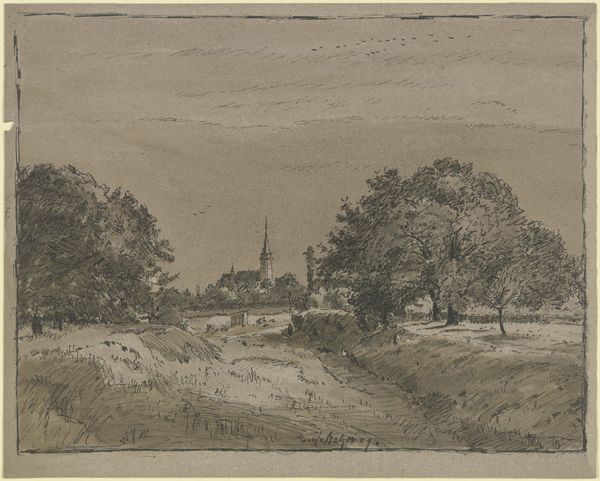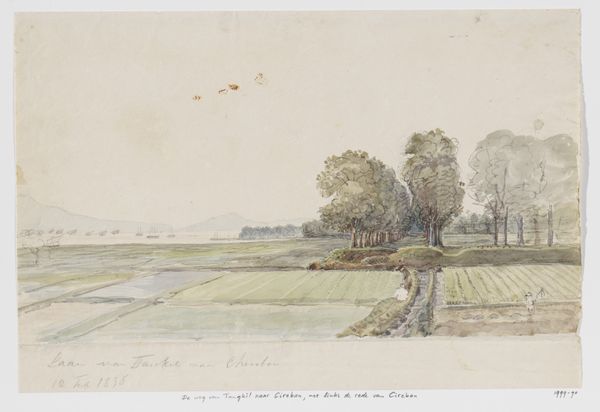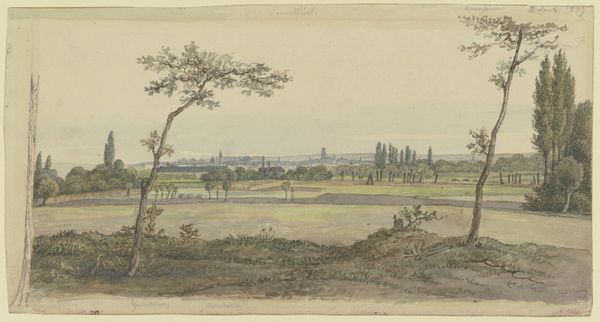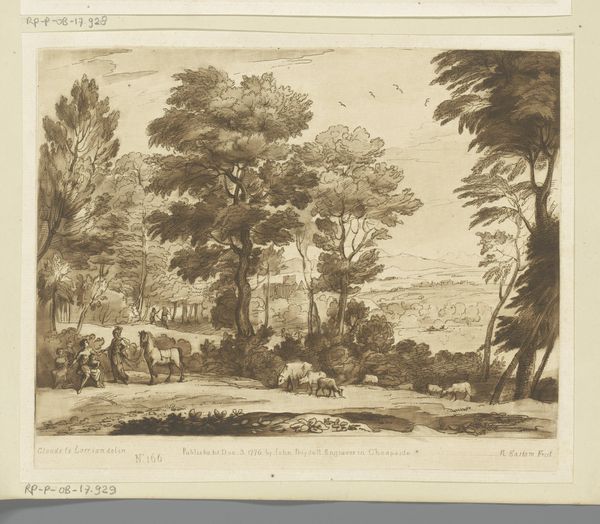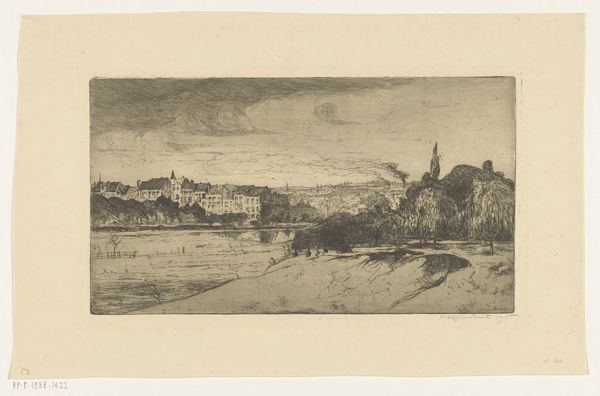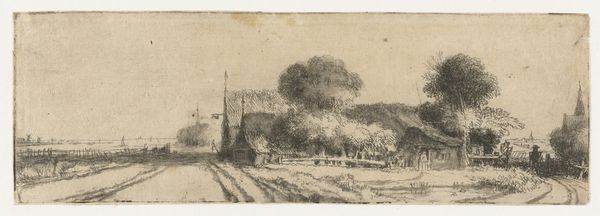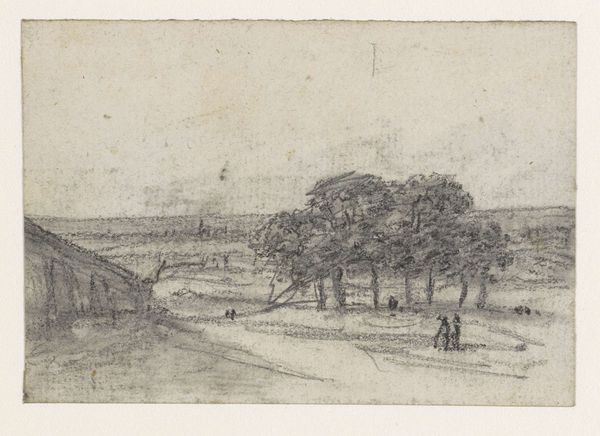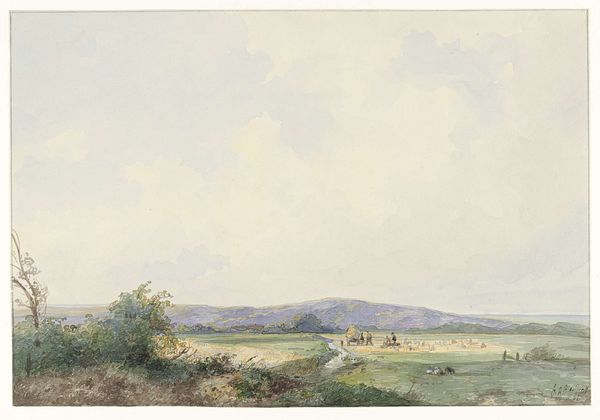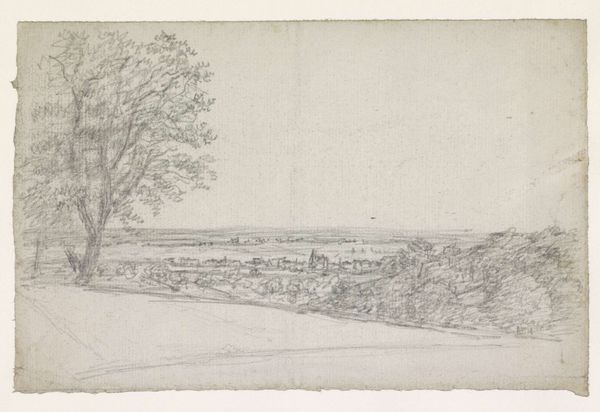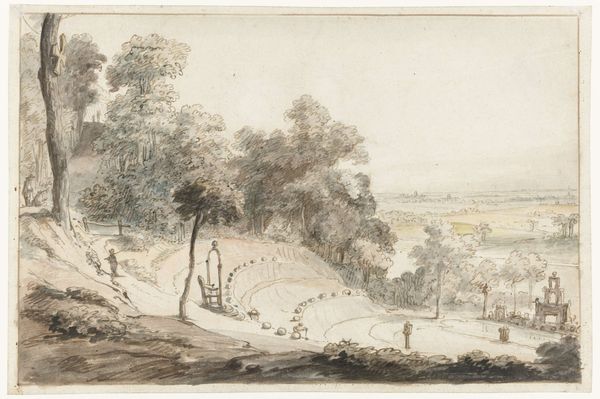
Dimensions: height 128 mm, width 300 mm
Copyright: Rijks Museum: Open Domain
Curator: Here we have Johan Hendrik Weissenbruch's "Panoramisch landschap," or "Panoramic Landscape," dating from before 1903. It's a watercolor piece held here at the Rijksmuseum. Editor: My first impression is one of quietude, of subdued light. It feels almost like a faded memory. Curator: I find it interesting how the horizon line dominates, dividing the composition nearly in half. It's a rather conventional compositional technique, but it feels effective here. The sky seems to be holding as much visual weight as the earth beneath. Editor: The muted palette certainly emphasizes that equality, doesn't it? It's less about dramatic contrast and more about a blending, a softening of boundaries. What does this suggest about his vision? Was this about unifying sky and land? Curator: The subdued palette, coupled with the impressionistic brushwork, suggests a search for harmony, a blurring of the distinction between land and sky. Consider how watercolours are often connected to an artistic fascination with atmosphere and with transient effects of weather. Editor: Definitely. There's also something about the small scale, the intimacy of a watercolor piece like this, that amplifies its emotional resonance. It's not shouting, it's whispering. This "Panoramisch landschap" evokes an impression rather than a clear visual description. Curator: Right. Look how that delicate spire rises in the background, and note how it almost punctures the landscape; it hints at the ever present human interaction, within nature’s open field. Editor: That spire offers a glimmer of human presence. Even then, its form almost evaporates within the clouds, mirroring our fragile relationship with time. Curator: Very astute. Weissenbruch invites us to ponder the nature of memory and our own fleeting passage through these landscapes. Editor: I'll certainly look at my surroundings differently today. Curator: I appreciate you mentioning it, as it is interesting that landscape and its symbolic imagery hold our imagination to question, challenge, and represent culture in every era.
Comments
No comments
Be the first to comment and join the conversation on the ultimate creative platform.
